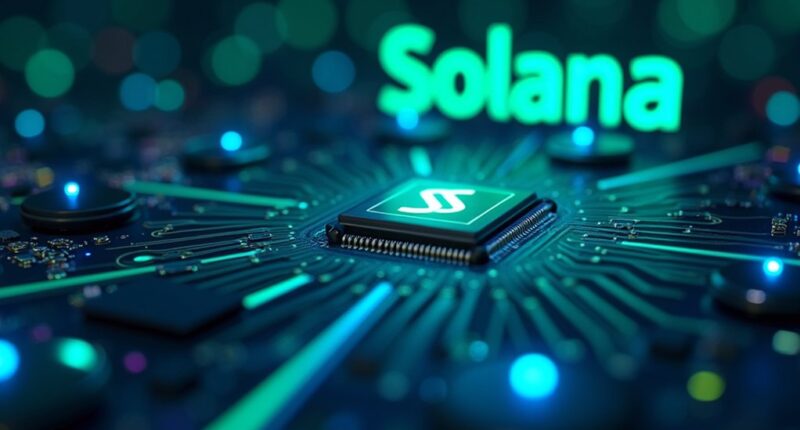How significant is Circle’s recent $1.25 billion USDC mint on the Solana blockchain in shaping the stablecoin and decentralized finance landscape? This volume, which likely aggregates multiple large issuances, represents a substantial share of Circle’s overall USDC minting activity in 2025 and underscores Solana’s expanding role within the stablecoin ecosystem. Notably, Circle minted $750 million USDC on Solana in a single day, marking the largest one-day issuance on the network to date, and within 30 days, total minting reached $5.5 billion. These figures demonstrate robust demand for dollar-backed stablecoins in Solana’s DeFi environment and highlight rapid growth that may influence liquidity dynamics. This milestone highlights Solana’s capacity for high-volume stablecoin transactions and its growing importance in the stablecoin market.
The influx of USDC on Solana significantly enhances liquidity for decentralized finance protocols, improving trading depth and facilitating seamless user experiences by providing compliant, dollar-backed liquidity. Such stablecoin availability is critical for lending, borrowing, and payment applications, thereby fostering ecosystem expansion. The increased liquidity tends to attract new projects and users, positioning Solana more competitively against other blockchains like Ethereum. Furthermore, USDC minting supports cross-chain operations, enabling interoperability and capital flow across multiple blockchain networks, which is increasingly important as DeFi evolves. Circle’s large-scale minting activity on Solana is a strategic move to boost liquidity within the ecosystem.
Circle’s multi-chain strategy underpins this expansion, seeking to diversify USDC deployment beyond Ethereum onto blockchains offering faster and cheaper transactions, such as Solana. This approach enhances cross-platform liquidity and cements USDC’s role as a foundational digital dollar across ecosystems. Circle’s confidence in Solana’s scalability and infrastructure aligns with broader industry trends favoring scalable alternatives to Ethereum for stablecoin use, though risks remain related to network security and regulatory scrutiny.
Solana’s blockchain advantages, including high transaction speeds and low fees, make it an attractive platform for large stablecoin issuances and DeFi activity. These technological strengths drive developer interest and user adoption, reinforcing Solana’s competitive edge. However, market participants should consider that rising USDC supply on Solana may influence broader crypto market liquidity and asset prices, warranting close observation of minting trends for potential impacts on trading volumes and price signals.









